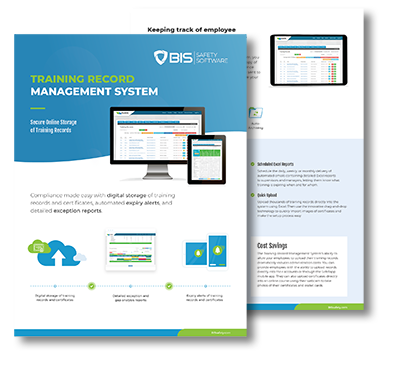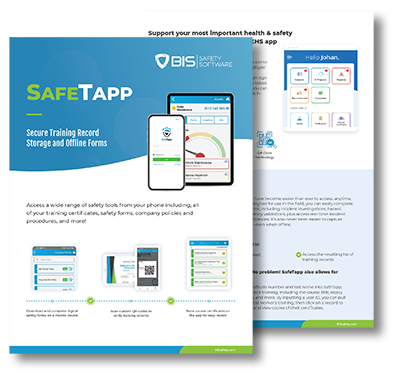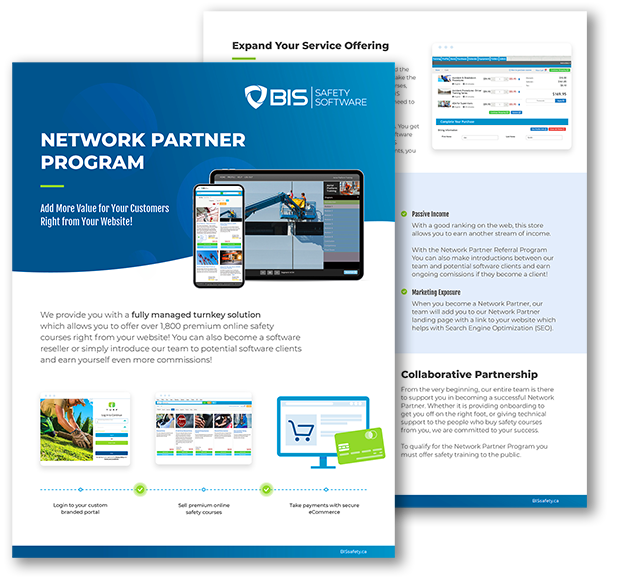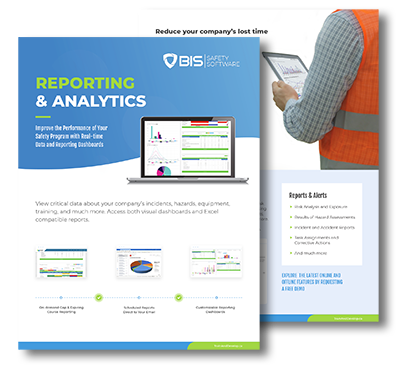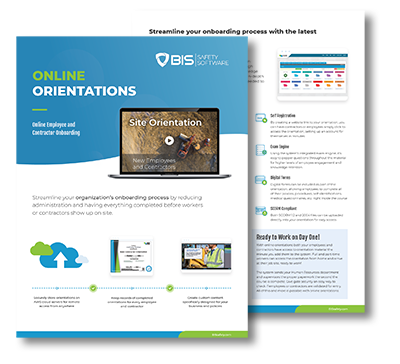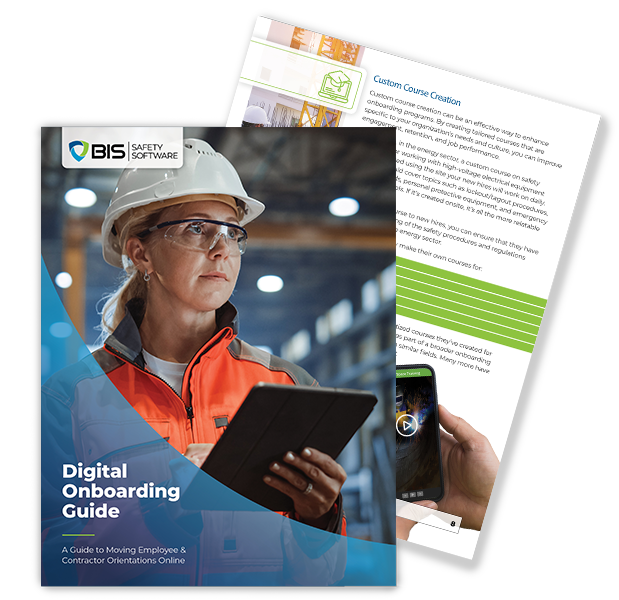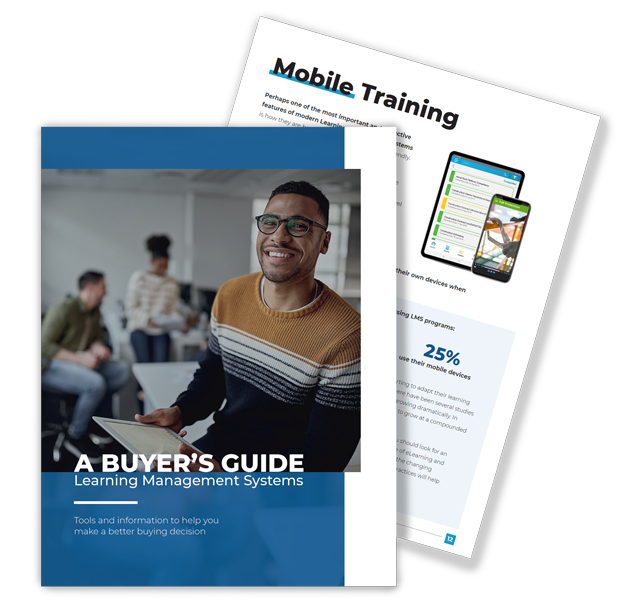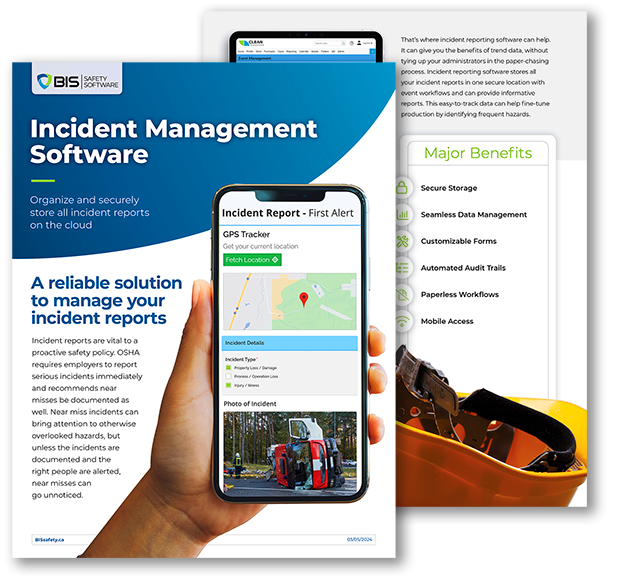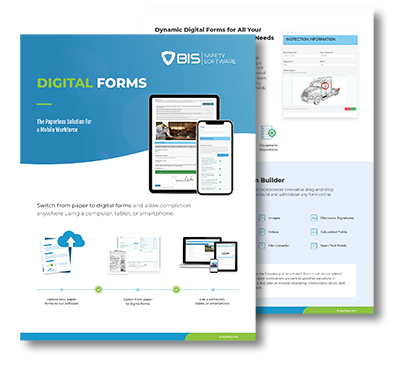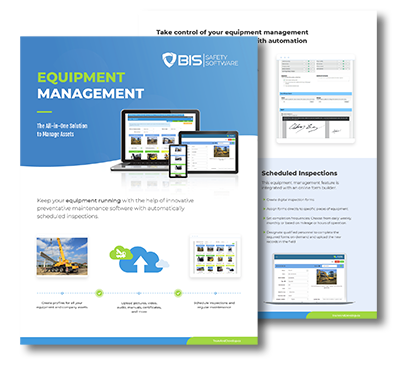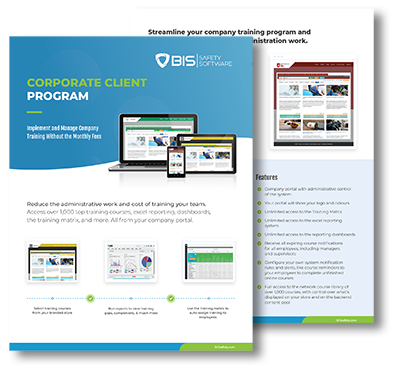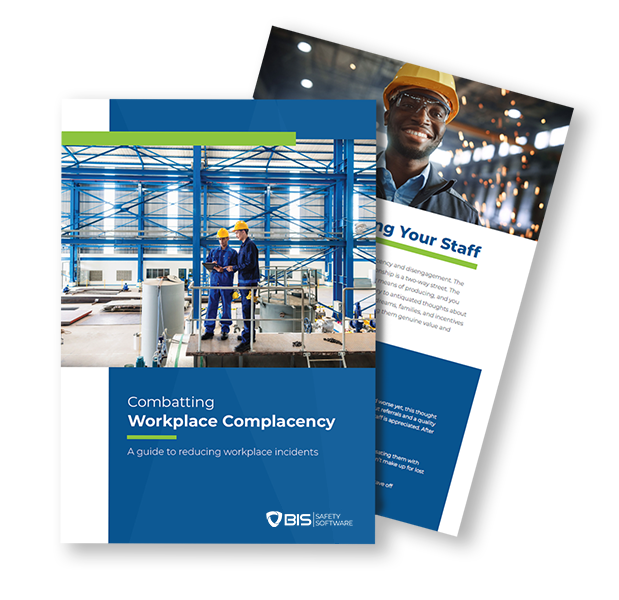Virtual Reality, Real Safety

Virtual Reality, Real Safety Jennifer Lastra’s Mission to Save Lives Lastra talks psychology, VR, and AI in workplace training. By Luke Hillenbrand Facebook Twitter LinkedIn “Compliance doesn’t equal competence. We have to do better.” Jennifer Lastra started her career as an electrician in the US Navy. She spent years working in shipbuilding and manufacturing as boots on the ground. She worked as a contractor in shipyards, frequently operating in high-risk environments with minimal supervision. This was real work, alongside people who did dangerous jobs every day. Then she saw the gaps—massive gaps in how safety was taught, understood, and retained. “I didn’t even realize how unsafe shipboard construction was until years later. The challenges go beyond just the hazards of working with electricity inside a steel vessel floating on water. And yet, we weren’t taught about self-awareness or situational awareness the way we should have been. We were just thrown in.” Jennifer Lastra Today, Lastra is on a mission to change that. As the Co-Founder and CEO of 360 Immersive, she’s pioneering the use of virtual reality (VR) in safety training. Her firm creates deeply immersive experiences. This is training that forces workers to engage, react, and remember. Her philosophy is simple: traditional training isn’t working. And if the fatality rates prove anything, it’s that the industry is long overdue for disruption. From the Navy to Night Vision to VR After the Navy, Lastra moved into shipbuilding. After that — manufacturing, making night vision goggles for military and emergency responders. She loved the sense of service—helping those who protect others. But eventually, she felt the pull to do something on her own. She wanted to build something. And in 2014, she saw her opportunity: virtual reality. “We started being able to pair cell phones with VR viewers,” she says. “Even if it was just cardboard headsets, I knew this technology had the power to completely immerse someone. And if you can immerse them, you can have the ability to modify their behavior.” Jennifer Lastra But Lastra isn’t a tech person. She never set out to be one. What drew her in wasn’t the hardware—it was the potential. “It was the perfect storm,” she says. “Entrepreneurship, powerful technology, and the chance to fix something I knew was broken.” She took that vision and started building. At first, there were skeptics. Some dismissed VR as a gimmick, a novelty. But as more companies saw the results, they realized she was onto something. “When workers go through VR training, they retain more. They react faster. They make better decisions under pressure,” she says. “It’s not theory—it’s science.” Related read: Do you own a business in the insurance industry? Check out how Artificial Intelligence is transforming the insurance industry. Fixing the Gaps in Safety Training For Lastra, the problem with traditional safety training is that it’s passive. Workers sit through hours of slide decks, printed manuals, and video lectures. They check a box, take a test, and move on. But does any of it stick? “Most safety training today is outdated and ineffective,” she says. “We’re giving workers information, but we’re not engaging them. And when the moment comes—when they’re in a real situation—what do they actually remember?” She experienced the challenge firsthand early in her career. As someone with dyslexia, she struggled to translate technical training into real-world applications. “I could pass any test you threw at me,” she says. “But when I got to the fleet, I had no idea how to apply it.” That disconnect drives her work today. 360 Immersive doesn’t just build training programs—it builds experiences. Using VR, workers are placed in hazardous environments. They react, make decisions, and see the consequences of those decisions play out in real time. “The goal is to meet learners where they are,” she says. “a scenario they’ll never forget. ”Some people learn best through reading, others hands-on, or a combination of both. VR bridges the gap, blending learning styles creating a more effective, engaging, and memorable experience.” And it’s not just about skill development. VR can replicate real-life pressures. Confined spaces, operating machinery under stress, reacting to an unexpected hazard. VR goes beyond technical skills – it’s ideal for simulating low-incident, high-risk scenarios like confined space rescues or warehouse fires, where mistakes have cost lives. “It’s a powerful tool for developing decision-making and critical thinking skills without actual consequences,” Lastra says. “The emotional connection makes training unforgettable and deeply impactful.” The Next Big Fight: Psychological Safety For Lastra, safety training isn’t just about hazard recognition and compliance – it’s about mindset. She believes psychological safety is the most overlooked factor in workplace safety. “Early in my career, I was often the first – or only – woman on the team, which made me feel like an outsider. I didn’t feel safe enough to raise my hand or ask questions. How many people still face this same challenge today?” She argues that fear prevents workers from speaking up about unsafe conditions – fear of asking a “stupid” question, fear of retaliation, fear of rejection. “People don’t speak up if they don’t feel like they belong. If they don’t feel safe,” she says. Her approach integrates psychological safety, mindfulness, and situational awareness into safety training. Instead of just teaching PPE regulations, we have an opportunity to dig deeper to understand, ‘Why aren’t you wearing it?’ or ‘Why did you skip inspecting it?’ Maybe it didn’t fit, or they were rushing to finish a task. Powerful storytelling in VR goes beyond compliance by illustrating the root causes of unsafe behaviors. By immersing learners in realistic, relatable scenarios, they build self-awareness, confidence, and the ability to speak up, take responsibility, and make safer decisions – key elements of a psychologically safe workplace. “If we can create emotional connections to training, we can change behavior. That’s the missing piece.” Jennifer Lastra The Fight for Better Standards Lastra isn’t just battling outdated training methods—she’s fighting complacency. “While yearly numbers fluctuate, the overall trend of workplace fatalities has
Safety Myths
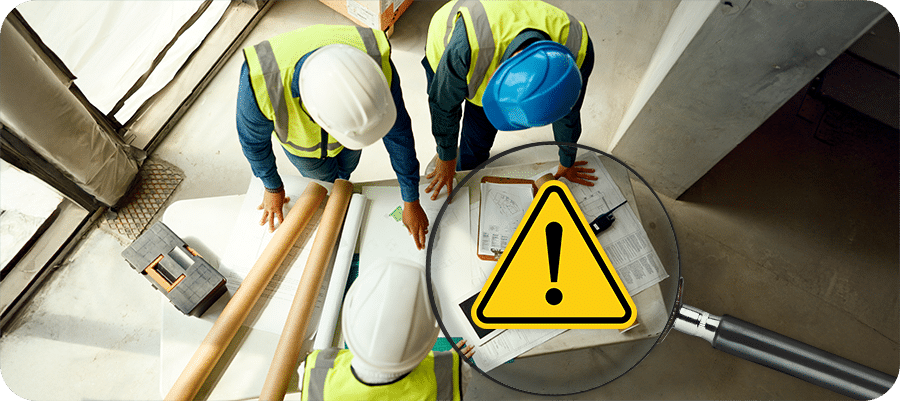
Safety Myths And Which Ones Need to Die! Does your workplace suffer from ‘fakelore’? By Luke Hillenbrand Facebook Twitter LinkedIn Some workplace safety “truths” have been passed down for years—but that doesn’t make them right. In fact, some of the most common safety beliefs are flat-out dangerous. It’s time to call them out before they get someone hurt. Here are some of the biggest myths that need to be put to bed: 1. “We’ve Always Done It This Way, and It’s Been Fine” Why it’s dangerous: Just because it worked before doesn’t mean it’s safe now. The fix: Regularly review procedures and update them based on new technology and best practices. Just because something hasn’t caused an accident yet doesn’t mean it won’t. Luck is not a safety strategy. Every shortcut taken without consequence is just stacking the odds against you. The right way to do something is the safe way—not just the way it’s always been done. This myth is especially dangerous because it resists change. New technology, updated regulations, and evolving best practices exist for a reason. Sticking to outdated methods means ignoring safer, more efficient ways to work. It’s only a matter of time before that “tried and true” approach fails in a catastrophic way. ————————————————————————— “People with [differing] attitudes or inexperience think they can cut corners, but it will catch up with them eventually. It’s just like running stop signs—you might get away with it for a while, but sooner or later, disaster strikes.” Robin Postnikoff ————————————————————————— 2. “More PPE Means More Safety” Why it’s dangerous: Too much PPE can reduce mobility and create new hazards. The fix: Use the hierarchy of controls—eliminate hazards first, then rely on PPE as a last line of defense. PPE is essential, but it’s not a magic shield. Wearing thick gloves while handling tiny components can reduce grip and increase risk. Heavy gear in hot conditions can lead to heat exhaustion. Safety starts with eliminating hazards—not just piling on more protective equipment. The key is the hierarchy of controls. Remove the hazard first. Substitute safer alternatives. Install engineering or administrative controls before relying solely on PPE. Workers need the right protection, not just more protection. ————————————————————————— “Sometimes, extreme PPE requirements actually cause more problems. We had sites where tying off at two steps was mandatory, but workers were tripping over their harness cords. It wasn’t reasonable, and people got hurt because of it.” Brett Burkard ————————————————————————— 3. “A Quick Task Doesn’t Need Full Safety Precautions” Why it’s dangerous: Accidents happen in seconds, especially when rushing. The fix: Treat every task—no matter how small—as an opportunity to follow proper safety procedures. The worst accidents happen when people skip safety steps “just for a second.” It only takes a moment for a fall, a fire, or an amputation to happen. No job is too small for safety. Related read: Do you own a business in the insurance industry? Check out how Artificial Intelligence is transforming the insurance industry. ————————————————————————— “Every rule has been written in blood. People don’t take things seriously until someone gets hurt or a company gets sued. That’s why we drill safety into training—it has to stick before something bad happens.” Robin Postnikoff ————————————————————————— 4. “If It’s Not an Injury, It’s Not a Big Deal” Why it’s dangerous: Near misses are warnings that something is wrong. The fix: Investigate and correct all near misses before they turn into serious accidents. Near misses are flashing warning signs. Ignoring them guarantees that next time, someone will get hurt. Treat close calls like actual incidents—investigate, correct, and learn from them. In industries like construction and manufacturing, near misses are often precursors to severe accidents. A worker who trips but doesn’t fall today might break a leg tomorrow. A machine that jams without consequence today might lead to an amputation next week. Reporting and addressing near misses prevent tragedies. 5. “Good Workers Don’t Need Safety Training” Why it’s dangerous: Experience can lead to overconfidence and complacency. The fix: Make regular safety training mandatory for all employees, no matter their experience level. Experience doesn’t make anyone invincible. In fact, veteran workers are often the ones who get complacent. Training isn’t just for rookies—it’s for everyone, all the time. ————————————————————————— “I don’t care if you have a master’s degree in safety. If you don’t have the experience, the network, and the mindset to keep learning, you’re not going to be a good safety person. Training is never just a ‘one and done.” Kevin Swinden ————————————————————————— 6. “Slower Work Is Safer Work” Why it’s dangerous: Moving too slowly can cause inefficiencies and increase risk. The fix: Focus on smart work—trained, controlled, and precise—rather than just slow work. Rushing is dangerous, but moving at a crawl isn’t the answer either. Safety is about working smart, not just slow. Proper training and good procedures allow workers to be both safe and efficient. Think about high-risk jobs like firefighting or emergency response. Speed is necessary, but it’s trained, controlled, and precise. The same applies to workplaces. Efficiency and safety go hand in hand when workers follow procedures correctly. 7. “Only High-Risk Jobs Require Safety” Why it’s dangerous: Every workplace has risks, even offices. The fix: Promote workplace-wide safety initiatives. That includes ergonomics, mental health, and general hazard awareness. Office workers don’t wear hard hats, but that doesn’t mean they’re risk-free. Ergonomics, air quality, mental health, and electrical hazards all pose serious threats in lower-risk jobs. Safety applies everywhere. ————————————————————————— “Workplace safety is expanding beyond just physical hazards. We’re seeing a shift in how mental well-being is incorporated into safety culture, and that’s a game-changer.” Lisa Rantucci ————————————————————————— 8. “Accidents Just Happen” Why it’s dangerous: Almost all workplace accidents are preventable. The fix: Build a proactive safety culture where workers feel responsible for identifying and addressing hazards. No, they don’t. Almost every workplace accident is preventable. Ignoring risks, skipping procedures, and relying on luck is a choice—and it’s a bad one. ————————————————————————— “I’ve seen companies turn their safety culture
Would You Bet Your Paycheck on Safety?
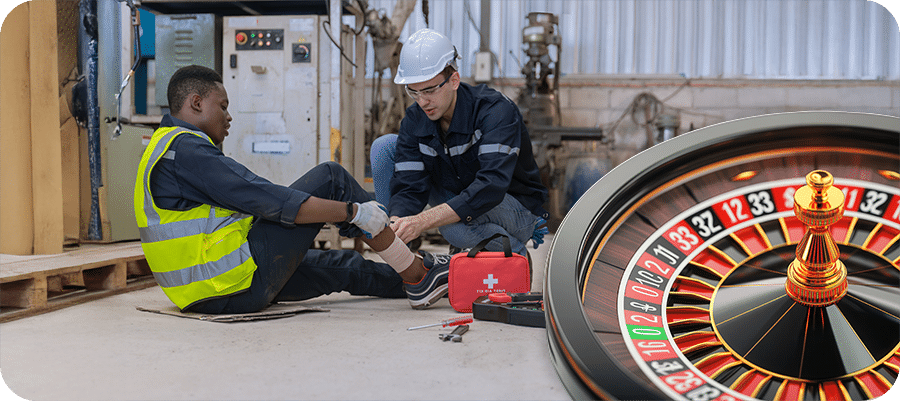
Would You Bet Your Paycheck on Safety? That Need to Die By Luke Hillenbrand Facebook Twitter LinkedIn Imagine this: At the end of every shift, you had to bet your entire paycheck that nobody on your crew got hurt. Would you do anything differently? Would you double-check your PPE? Would you remind a co-worker to use a harness? Would you take that extra second to secure a load or test a machine lockout? The truth is, whether you realize it or not, you are betting on safety every day. The stakes aren’t just money—they’re your health, your reputation, and your future. One bad decision, one shortcut, one ignored hazard, and you could lose everything. Safety is More Than a Rule—It’s a Wager Most people wouldn’t gamble their paycheck on pure luck. But every time someone skips a step, assumes a risk, or rushes a job, they’re rolling the dice. Sometimes they win—nothing happens. Other times? That bet costs them weeks of lost wages, medical bills, or a permanent injury. Think about it: A mechanic skips wearing gloves because “it’s just a quick fix.” That quick fix leads to stitches and time off work. A forklift operator speeds up to finish early. One wrong turn leads to a collision—and unemployment. A roofer skips fall protection “just for a second.” That second changes their life forever. Key Takeaways Lorem Ipsum is simply dummy text of the printing and typesetting industry. Lorem Ipsum has been the industry’s standard dummy text ever since the 1500s, when an unknown printer took a galley of type and scrambled it to make a type specimen book. It has survived not only five centuries, but also Lorem Ipsum is simply dummy text of the printing and typesetting industry. Lorem Ipsum has been the industry’s standard dummy text ever since the 1500s, when an unknown printer took a galley of type and scrambled it to make a type specimen book. It has survived not only five centuries, but also Lorem Ipsum is simply dummy text of the printing and typesetting industry. Lorem Ipsum has been the industry’s standard dummy text ever since the 1500s, when an unknown printer took a galley of type and scrambled it to make a type specimen book. It has survived not only five centuries, but also Lorem Ipsum is simply dummy text of the printing and typesetting industry. Lorem Ipsum has been the industry’s standard dummy text ever since the 1500s, when an unknown printer took a galley of type and scrambled it to make a type specimen book. It has survived not only five centuries, but also The House Always Wins Casinos are designed so that, over time, the house always wins. Unsafe work habits work the same way. Maybe you’ve skipped safety steps before and nothing happened. Maybe you’ve seen others take risks and walk away fine. That’s like winning a few hands in a row—it feels good, but the odds will catch up eventually. Complacency is the biggest con of all. The more times a worker gets away with a risk, the more confident they become in their luck. But luck runs out. And when it does, the price is steep. Related read: Do you own a business in the insurance industry? Check out how Artificial Intelligence is transforming the insurance industry. How to Play It Safe (and Win Every Time) 1. Be Smart Act like your paycheck depends on it. Because in many ways, it does. 2. Think Long-Term A shortcut might save five minutes, but an injury could cost five months. 3. Hold Each Other Accountable Safety isn’t a solo game. Watch out for your crew. Remind them that a mistake could cost them more than just pride. 4. Stay Sharp Keep safety top of mind. Refresh your training. Don’t let routine make you careless. 5. Call Out the Risks If something feels unsafe, stop. Speak up. Fix it before it becomes an accident. Make the Right Bet If you had to bet your paycheck on safety, you’d work smarter. You’d pay attention. You’d make sure nobody around you was cutting corners. You’d take safety seriously—because you’d have too much to lose. The reality? You already do. Every shift, every task, every decision is a bet. Make sure it’s one you can afford to win. Stay sharp. Stay safe. Because in this game, there’s no cashing out. BIS Social Media Follow BIS Safety Software for industry-leading safety updates, training solutions, and more. Hover over each icon for quick access to follow, share, or explore our other channels. Facebook Instagram Linkedin Youtube Frequently Asked Questions Have question in mind? We are here to answer. If you don’t see your question here, drop us a line at our contact page. Lorem Ipsum is simply dummy text of the printing and typesetting industry? Lorem ipsum dolor sit amet, consectetur adipiscing elit. Ut elit tellus, luctus nec ullamcorper mattis, pulvinar dapibus leo. Lorem Ipsum is simply dummy text of the printing and typesetting industry? Lorem ipsum dolor sit amet, consectetur adipiscing elit. Ut elit tellus, luctus nec ullamcorper mattis, pulvinar dapibus leo. Lorem Ipsum is simply dummy text of the printing and typesetting industry? Lorem ipsum dolor sit amet, consectetur adipiscing elit. Ut elit tellus, luctus nec ullamcorper mattis, pulvinar dapibus leo. Lorem Ipsum is simply dummy text of the printing and typesetting industry? Lorem ipsum dolor sit amet, consectetur adipiscing elit. Ut elit tellus, luctus nec ullamcorper mattis, pulvinar dapibus leo. Lorem Ipsum is simply dummy text of the printing and typesetting industry? Lorem ipsum dolor sit amet, consectetur adipiscing elit. Ut elit tellus, luctus nec ullamcorper mattis, pulvinar dapibus leo. Lorem ipsum dolor sit amet, consectetur adipiscing elit. Ut elit tellus, luctus nec ullamcorper mattis, pulvinar dapibus leo. Lorem ipsum dolor sit amet, consectetur adipiscing elit. Ut elit tellus, luctus nec ullamcorper mattis, pulvinar dapibus leo. Lorem ipsum dolor sit amet, consectetur adipiscing elit. Ut elit tellus, luctus nec ullamcorper mattis, pulvinar dapibus leo. Lorem ipsum dolor sit amet, consectetur


